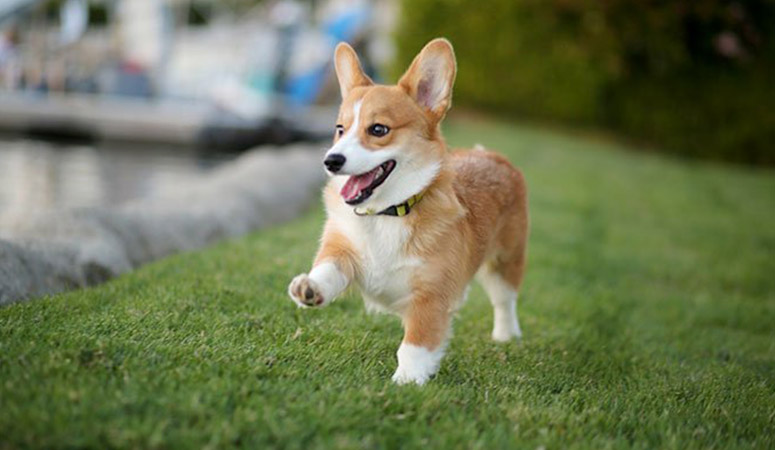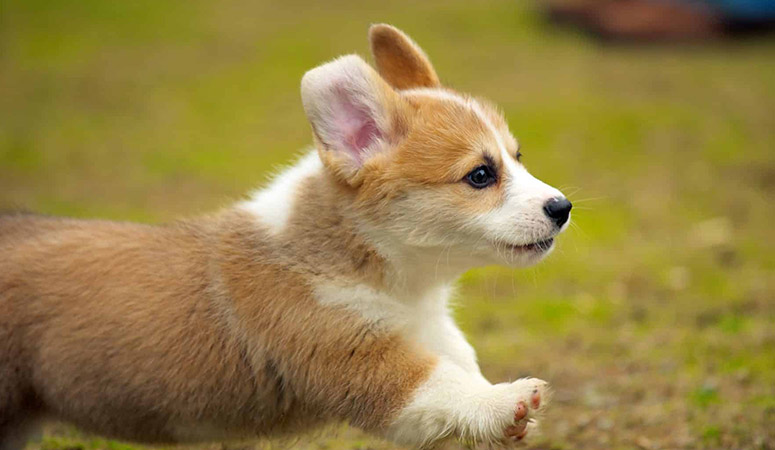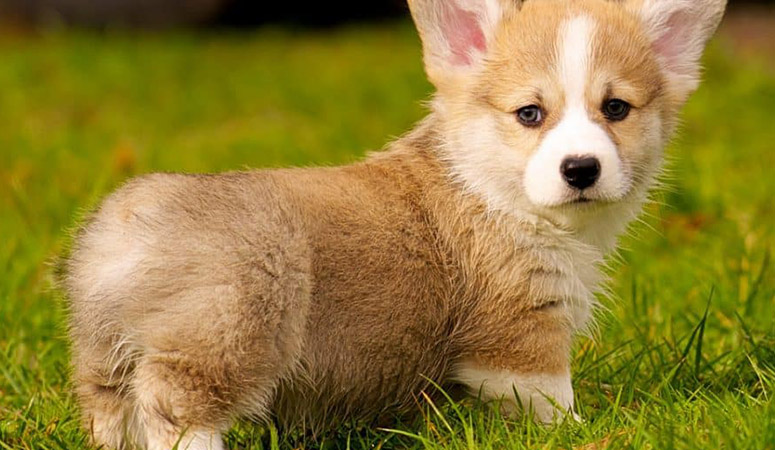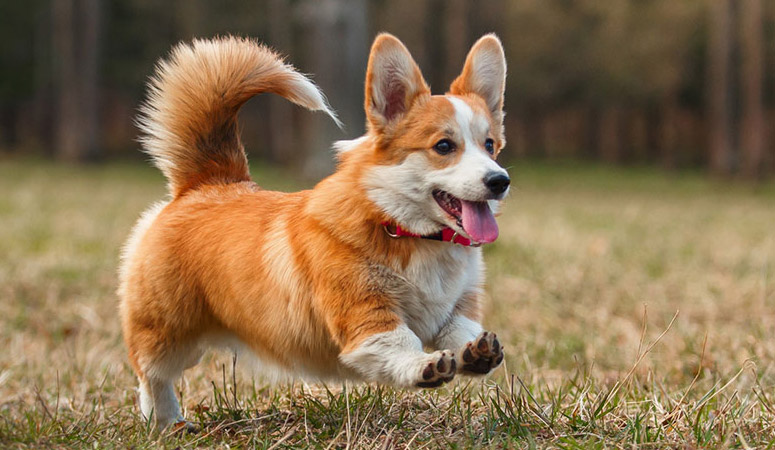Pembroke Welsh Corgi
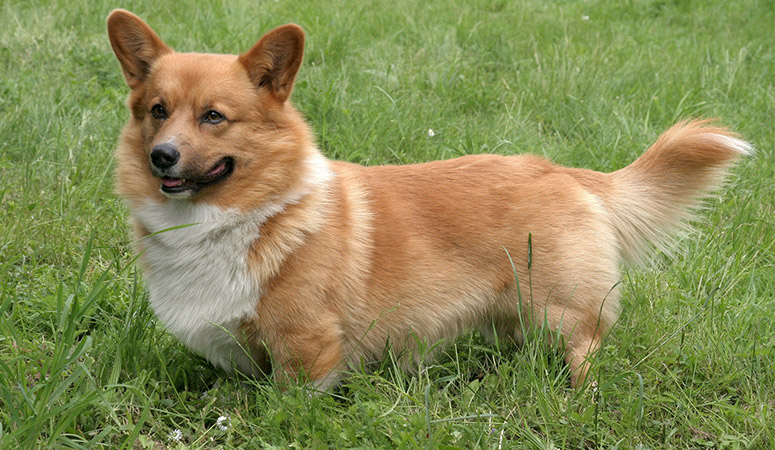
Here come Corgis, they’re once bred as an assistance of herdsman. Pembroke Welsh Corgis are longlasting herding companions as they are perfect for stamina. Their alertness makes them assistant herders, while their gentleness makes them favored by owners.
| Other Names | Pem, Pembroke, Pembroke Corgi |
| Color | Black, Tan, Blue, Red, White |
| Height | Males: 10-12 inches. Females: 10-12 inches. |
| Weight | Males: 22-30 pounds. Females: 20-28 pounds. |
| Life Span | 12-13 years |
| Personality | Affectionate, Smart, Alert |
| Exercise | Energetic |
| Origin |
| Popularity | #10 |
| Groom Needs | Weekly Brushing, Regularly Shedding |
| Kids Friendly | Yes with supervision |
| Dog Friendly | Yes with supervision |
| Watch Dog | |
| Family Dog | |
| Litter Size | 6-8 puppies |
Pembroke Welsh Corgi Pictures
Pembroke Welsh Corgi Video
Introduction
Among other popular herding dogs, the Pembroke Welsh Corgi stands out clearly. Endeared for their lively and amicable behavior, these small dogs can double as watchdogs too. Pembroke Welsh Corgis have sable-colored, thick, and weather-resistant double coats. However, some varieties come in red, fawn, or tan colors. They have powerful legs and well-built bodies suited for their services as cattle herding dogs and watch-dogs. Surprisingly, a standard male would weigh around 30 pounds, despite having a dwarf size with a shoulder height of barely 11 inches. A well-fed female equally stands to a similar height, although falling short of the hefty male pound-weight by a mere 2 inches or thereabouts. With a fair treatment of support and companionship, a Pembroke Welsh Corgi would thrive and possibly live up to an impressive age before they die naturally around their 13th year.
Living with Pembroke Welsh Corgi
With thick and double coat, the Corgis regularly shed coat. In the late spring or early summer, they will shed a lot. So this time owners need to be more busy with grooming and brushing. However, they do shed a fair amount daily. That means owners still need to groom them except spring and summer. So owners can choose to use a soft brush or metal comb to remove the shed hair. Brush them deep to their skin, so that there’re fewer tangles and pads. Their nails also need to be trimmed regularly, owners can choose to dress them toenail protectors. And with their ears checked, you can rest assured that they are clean and healthy, avoiding some wax build up, infections and irritations.
Developed to herd cattle and other livestock, the Pembroke Welsh Corgi is naturally strong and athletic. Though small in size, they love physical activity and is happiest when he has a job to do. Owners can take them out playing with some dogs, daily exercise is suitable to keep them physically healthy. Moderate exercise will keep Corgis mentally healthy, as they will be in a good mood when there’s thing to do. Twice-a-day brisk walks are suitable for Corgis to run off their energy. Two hours each time will be a good choice. Owners can spend quality 2-hours time with Corgis playing some activities such as fetch game, adding more pet-owner emotional connections and interactions.
Try to feed them with food that can build muscle and promote digestion. If you have no ideas about feeding them. Choose to buy some dog food with vegetables such as potato, beets, carrots. And food that contains egg, beef, chicken, lamb, poultry can be no wrong. Get rid of food such as bones, mustard, chocolate, milk, onions. High quality dog kibble is applicable to them. Suitable for both commercially manufactured and home-made food. If you find it difficult, ask veterinarian for a better advice. Owners may need to concern about the overweight issues, as it can lead to unhealthy built of dog. Check out the calorie and weight consumption of your dog regularly. Owners should learn some information about safety and stock of food.
Basically a healthy breed, most of the Pembroke is healthy. But careful and responsible owners will choose to screen some potential disease such as cardiac issues, eye disorders, degenerative myelopathy, elbow and hip dysplasia and bleeding disorder. Ears should be cleaned weekly for a better health. Basic cleasing will help keep dog in good health. Occasionally bath and groom them. Brush their teeth regularly and their fetid breath will not bring a sense of resistance to owners. Early screening tests is required as owners can decide the breeding plan in advance. Screen the stock for health conditions can be helpful and useful.
Total Annual Cost: $3400
Cost is estimated for the first year and may vary depending on many factors, such as dog food, health care, leash, collar, licensing, possible fencing, crates, training and obedience classes, dog-walking, grooming, treats, toys, flea, tick, and heart-worm meds, microchips, etc.
Pembroke Welsh Corgis are smart quick learners. It takes you little efforts to train them. Owners can choose to have puppy corgis hang around to make connection with people. Get familiar with different places and situations beginning at the age of 7 weeks. Usually four months is enough for Corgis to get him familiar with things around. Owners develop Corgis into a well-adjusted and well-mannered adult can help train them at an older age. But training a dog to behave good need firm implement and good methods. Adapt harsh or negative training methods can do no good to them. And you should concern about the fact that they hardly respond to repetitive training. Once properly trained, they will show good obedience.
History
The Corgis are a classic breed of dogs with an ancient history mingled in folklores and stories. There are two breeds of Corgis; the Pembroke Welsh Corgi and the Cardigan Welsh Corgi. Both breeds share a similar origin, but the Pembroke Corgi is probably a recently refined breed. Corgis are generally believed to originate from Wales, the Pembroke Welsh Corgi being associated with Pembrokeshire.
Although there are varying opinions attached to the origin of the Corgis, as to where and when they originated, more testimonials attest to their being descendants of the Nordic and Spitz types. Old folklore suggests that the Corgis used to be war dogs amongst fairies, until once upon a time two children, playing around in the woods, happened upon a party of mourning fairies who gifted them two Corgi puppies which they took home. According to the same lore, the Corgis became a popular breed amongst humans and were later employed in herding animals such as geese, cattle, and sheep. This account supported the belief that the Corgis are a divine gift to the human race.
Some historians believe that the Corgis were brought into Wales by the Viking travelers and Flemish weavers somewhere around the 1100s, while several ancient breeds, including the Swedish Vallhund, have been implicated in the ancestry of the Corgis. Many authors agree that such an account as this, perhaps, most plausible and realistic.
The Corgis were popular as herd dogs on farmlands until common people in Wales were permitted to farm their own lands.
In 1925, when the Welsh Corgis first featured in the show ring there was no separation between both breeds. After the Corgi Club was founded, efforts to distinguishably develop the two breeds were fostered by the club, especially after the club split into two factions later on. It was rather in 1928 that they were regarded as two varieties of the same breed, and by 1934 kennel clubs had begun to recognize them as separate breeds. The first Corgis were imported into the United States and they later became affiliated with royalty.
Helpful Information
Breed Club: PEMBROKE WELSH CORGI CLUB OF AMERICA, INC.
Breed Club Link: http://www.pembrokecorgi.org/
Breed Club Rescue:
Breed Club Rescue Link: http://pwcca.org/affiliate-pembroke-clubs/

